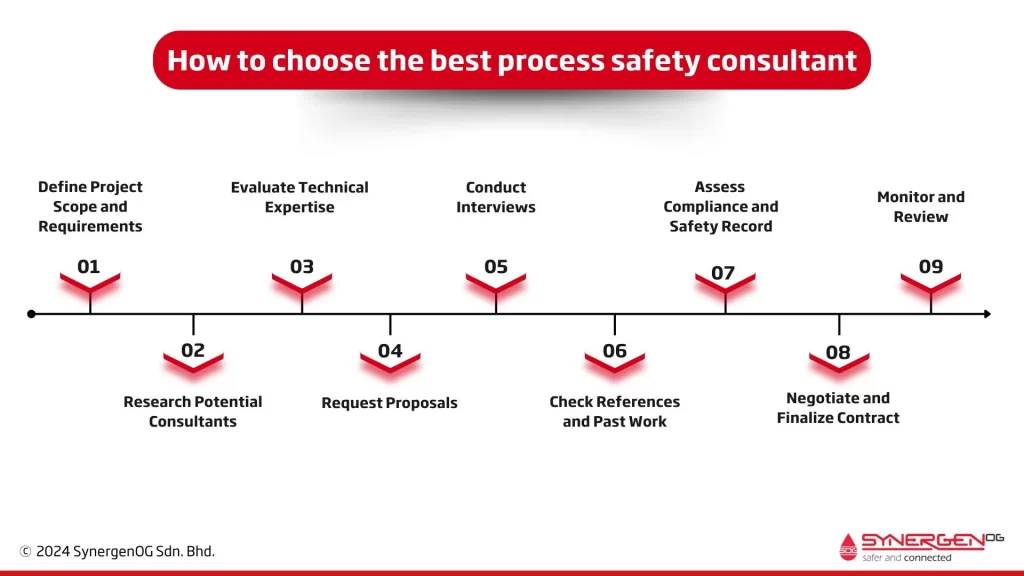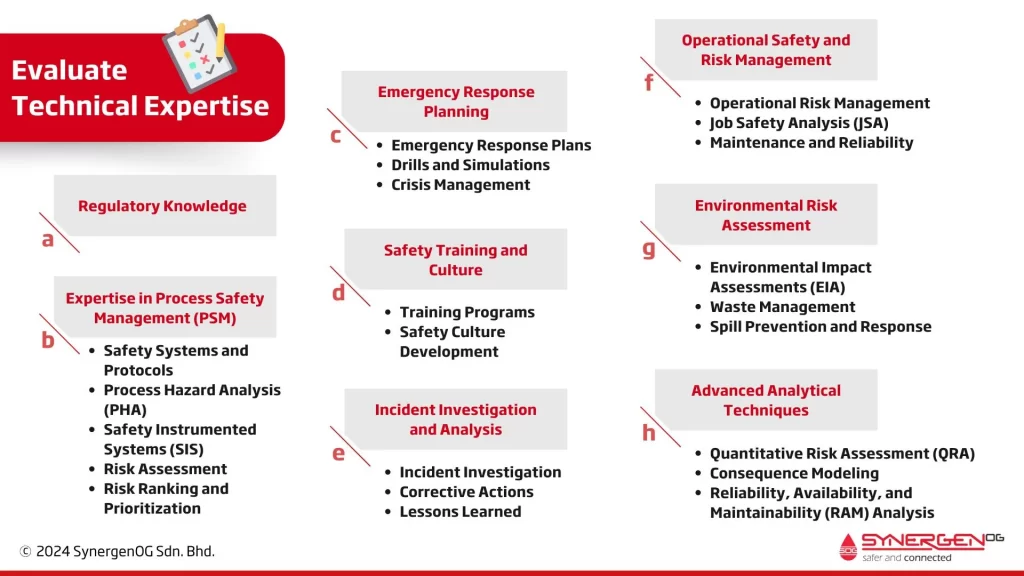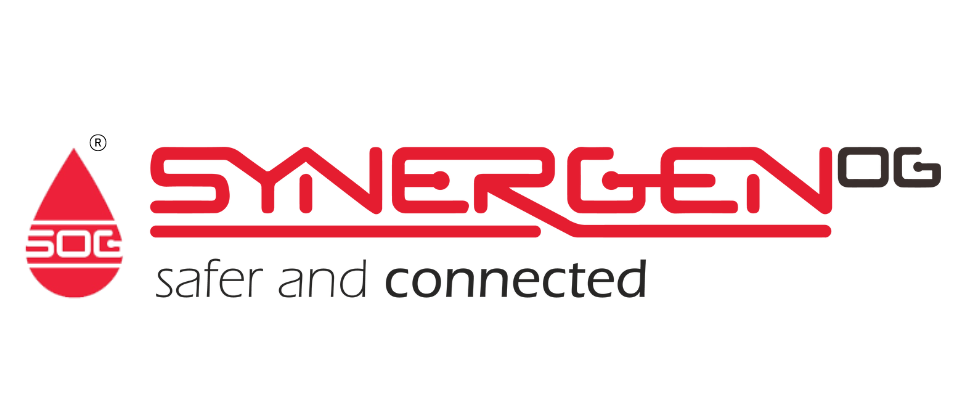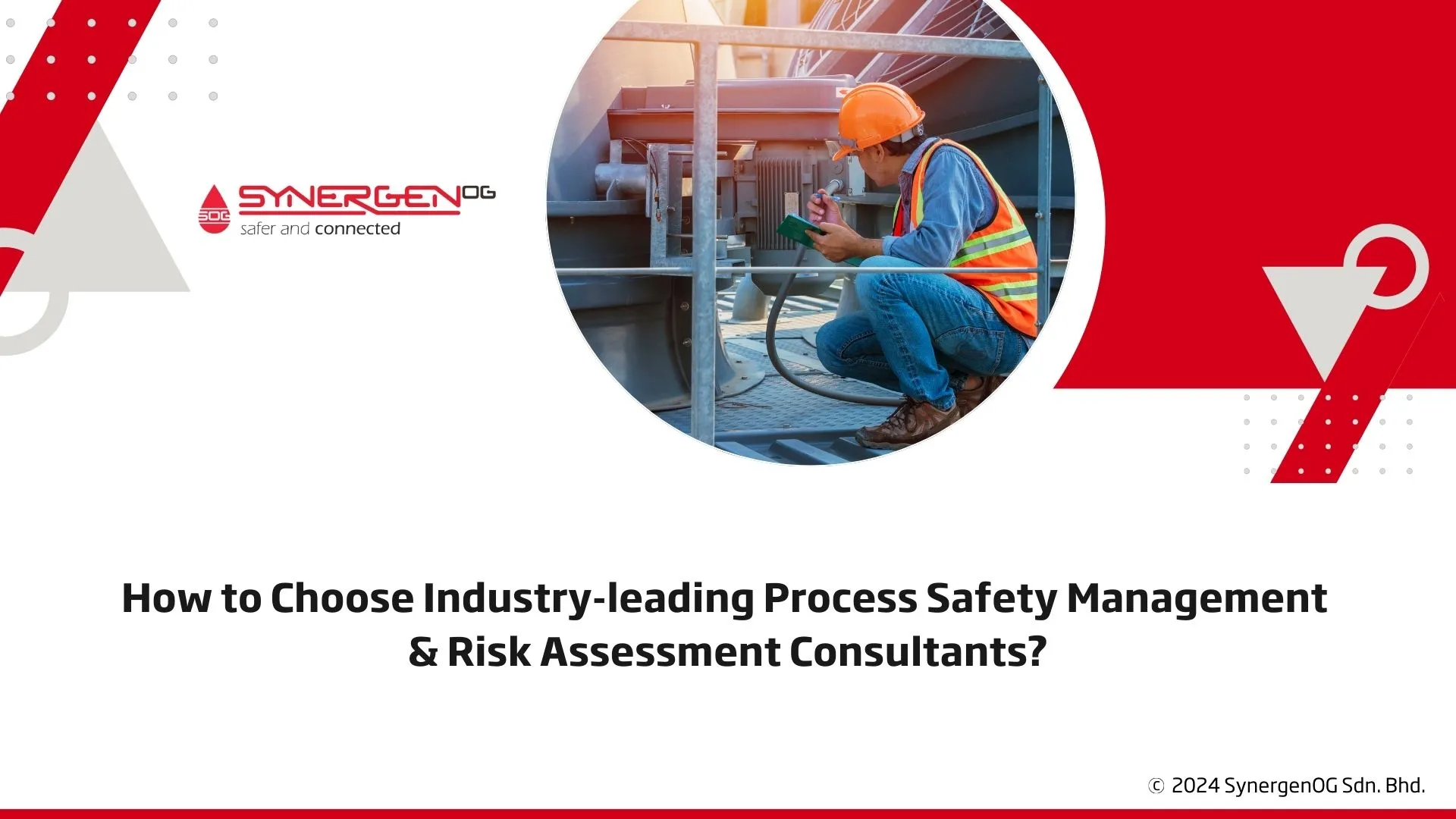| Summary: This article aims to guide readers through selecting the best consultant for PSM and risk assessment, ensuring that qualified and experienced professionals handle their projects effectively. Choosing process safety management and risk assessment consultants in the oil and gas industry requires expert scrutinizing of the portfolio of firms and professionals to make your project a grand success. |
Safety and risk reduction are critical issues in the high-risk environment of the oil and gas industry. Process Safety Management (PSM) and risk assessment are essential in preventing accidents and protecting human lives and assets.
Making the right choice in a consulting partner is not just a matter of due diligence—it’s a cornerstone of business success and effective risk management. The complexities inherent in the oil and gas sector, characterised by its dynamic regulatory environment and the inherent hazards of its operations, underline the necessity of this decision to choose an apt safety management firm for process safety and risk assessment consulting.
The right choice can mean the difference between proactive risk management and reactive disaster responses, between meeting regulatory requirements and exceeding them to achieve industry leadership in safety and operational excellence.
This decision’s impact extends through every level of an organisation. From the boardroom, where strategic decisions are underpinned by risk assessments, to the operational teams on the ground, who rely on transparent, actionable safety processes, the right consulting partner integrates within every facet of your business.
In the following sections, we will explore how to define your organisation’s needs, the critical criteria for choosing a consulting partner, and the strategic steps to ensure your choice meets and exceeds your expectations.
How to choose the best process safety consultant

1. Define Project Scope and Requirements
Objective Setting
The first important step is clearly defining the objectives of your PSM and risk assessment project. This involves understanding what you aim to achieve, whether it’s compliance with regulatory requirements, improving safety protocols, or both.
Scope of Work
Detail the specific tasks, deliverables, and outcomes expected from the consultant. This might include safety audits, hazard identification studies, and emergency response planning.
Timeline and Budget
Establish a realistic timeline and budget for the project. A well-defined timeline helps in tracking progress, while a clear budget ensures that costs are managed effectively.
2. Research Potential Consultants
Industry Experience
Seek consultants with extensive experience in the oil and gas sector. Their familiarity with industry-specific challenges and standards will be invaluable.
Reputation and References
Review references and case studies to check the reputation of potential consultants. Positive feedback from previous clients can indicate reliability and expertise.
3. Evaluate Technical Expertise

a) Regulatory Knowledge
Ensure the consultant deeply understands relevant safety regulations and standards, such as OSHA PSM, EPA RMP, and other local or international standards.
b) Expertise in Process Safety Management (PSM)
- Safety Systems and Protocols: Development and implementation of safety systems and protocols.
- Process Hazard Analysis (PHA): Conducting PHAs to analyse potential hazards in processes.
-
- Hazard Identification Techniques: The consultant should be proficient in various process hazard analysis techniques, including
-
-
- Hazard and Operability Study (HAZOP)
- Hazard Identification (HAZID)
- Layers of Protection Analysis (LOPA)
- Failure Modes and Effects Analysis (FMEA)
- ALARP Assessment
-
- Safety Instrumented Systems (SIS): Design and implementation of SIS to mitigate risks.
- Risk Assessment: Quantitative and qualitative risk assessments to evaluate the potential impact and likelihood of identified hazards.
- Risk Ranking and Prioritization: Ranking risks to prioritise mitigation measures.
c. Emergency Response Planning
- Emergency Response Plans: Development and testing of emergency response plans.
- Drills and Simulations: Regular drills and simulations to prepare for potential incidents.
- Crisis Management: Establishing crisis management teams and protocols.
d. Safety Training and Culture
- Training Programs: Comprehensive training programs for employees at all levels.
- Safety Culture Development: Initiatives to foster a culture of safety within the organisation.
e. Incident Investigation and Analysis
- Incident Investigation: Thorough investigation of incidents to identify root causes.
- Corrective Actions: Development and implementation of corrective actions to prevent recurrence.
- Lessons Learned: Sharing lessons learned from incidents to improve overall safety.
f. Operational Safety and Risk Management
- Operational Risk Management (ORM): Integration of ORM into daily operations.
- Job Safety Analysis (JSA): Conducting JSAs to identify and mitigate risks associated with specific tasks.
- Maintenance and Reliability: Ensuring the maintenance and reliability of critical equipment.
g. Environmental Risk Assessment
- Environmental Impact Assessments (EIA): Conducting EIAs to understand and mitigate environmental risks.
- Waste Management: Development of waste management plans to minimise environmental impact.
- Spill Prevention and Response: Planning and preparation for spill prevention and response.
i. Advanced Analytical Techniques
- Quantitative Risk Assessment (QRA): Detailed quantitative assessments using advanced modelling techniques.
- Consequence Modeling: Use of software tools to model the consequences of potential incidents (e.g., explosion, fire, toxic release).
- Reliability, Availability, and Maintainability (RAM) Analysis: Analysis to improve system reliability and performance.
4. Request Proposals
Detailed Proposals
Request detailed proposals from shortlisted consultants. These should include their approach, methodology, and cost estimates.
Comparative Analysis
Compare the proposals based on the comprehensiveness of the approach, methodology used, and cost-effectiveness. This will help in selecting the best fit for your project needs.
5. Conduct Interviews
Team Interviews
Interview key team members to assess their expertise and ensure they are a good fit for your organisation’s culture and working style.
Case Studies and Simulations
Request case studies or simulation examples to gauge the consultant’s practical approach and problem-solving skills.
6. Check References and Past Work
Client Feedback
Contact past clients to gather feedback on the consultant’s performance, reliability, and effectiveness.
Site Visits
If possible, visit the sites of previous projects to see how the consultant’s work is applied in the real world and gain first-hand insights.
7. Assess Compliance and Safety Record
Safety Track Record
Review the consultant’s safety performance history and any incidents. A strong safety record is a good indicator of their commitment to safety.
Compliance History
Check the consultant’s track record of compliance with industry standards and regulations to ensure they adhere to best practices.
8. Negotiate and Finalize Contract
Contract Details – Include key elements in the contract, such as the scope of work, deliverables, timeline, and payment terms.
Performance Metrics – Incorporate performance metrics and milestones to measure progress and ensure accountability.
Confidentiality and IP – Protect confidential information and intellectual property through appropriate clauses in the contract.
9. Monitor and Review
Ongoing Monitoring – Regularly monitor the consultant’s progress through project meetings and reports. This helps ensure the project stays on track.
Feedback Loop – Maintain open communication for feedback and promptly address any issues that arise during the project.
Conclusion
Choosing the right Process Safety Management and Risk Assessment consultant is a critical decision that can have a profound impact on your operations. By focusing on experience, proven track records, communication skills, and the ability to provide tailored solutions, you can ensure that you partner with a consultant who will enhance the safety and efficiency of your oil and gas operations.
Investing in a top-tier PSM and Risk Assessment consultant is not just about compliance; it’s about safeguarding your most valuable assets – your people, your infrastructure, and your reputation. Make a wise choice and secure your operations against the inherent risks of the oil and gas industry.
By following these guidelines, you can select a consultant who will help you navigate the complexities of process safety management and risk assessment, ensuring a safer and more secure future for your business.
SynergenOG – Your Trusted PSM and Risk Assessment Partner
SynergenOG collaborates with top-tier companies in the Oil & Gas, Chemical, Petrochemical, and Power sectors. We conduct thorough inspections of their facilities to identify hazards and provide comprehensive recommendations to mitigate potential risks.
For consulting on your projects, please contact us.

